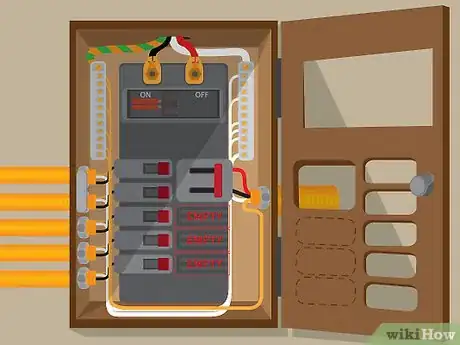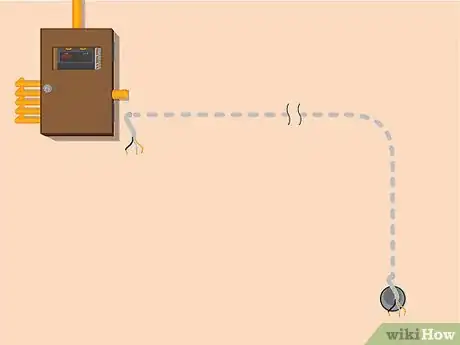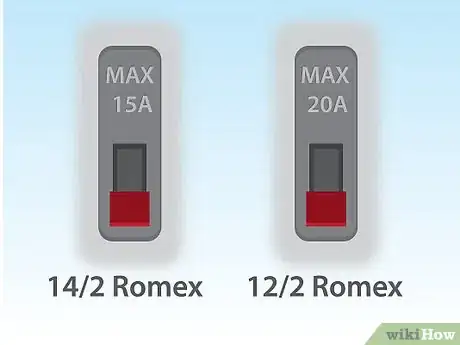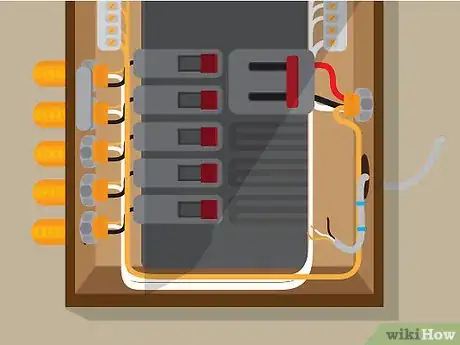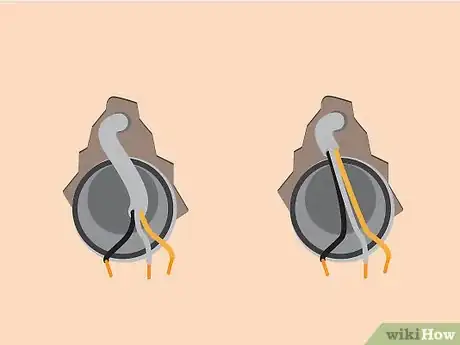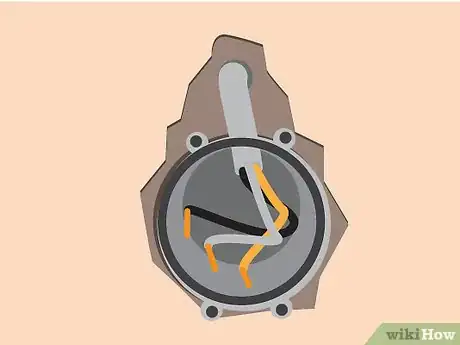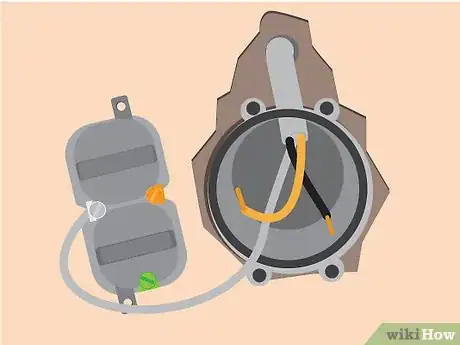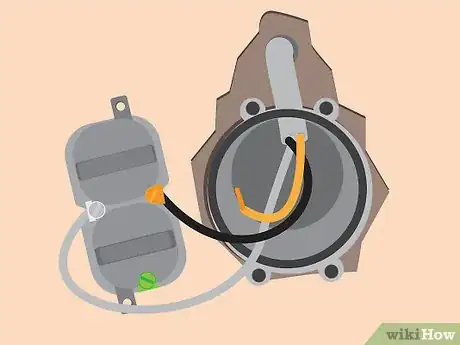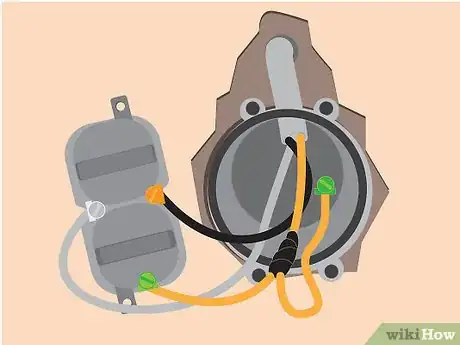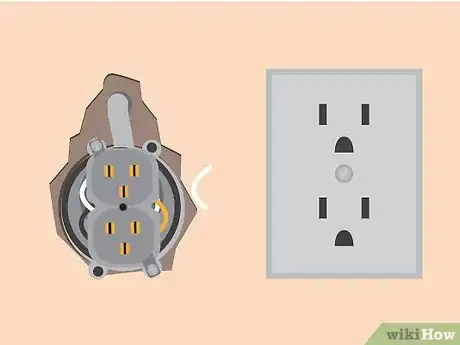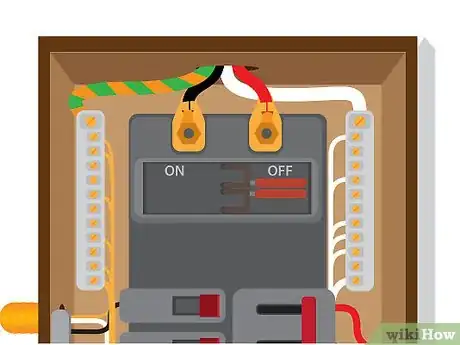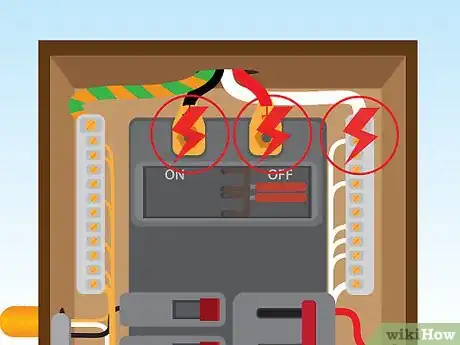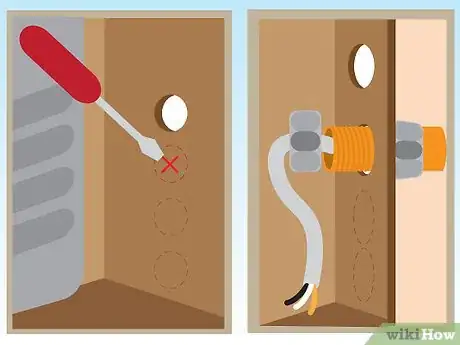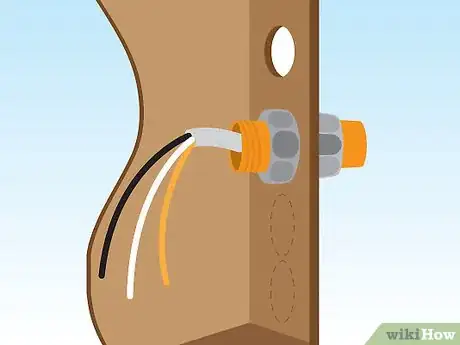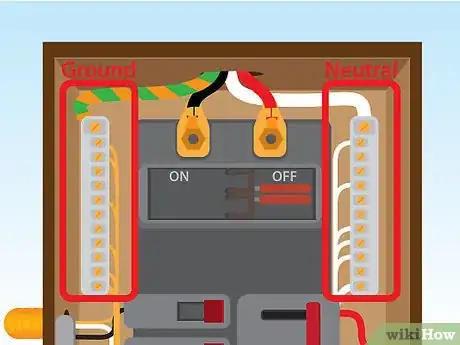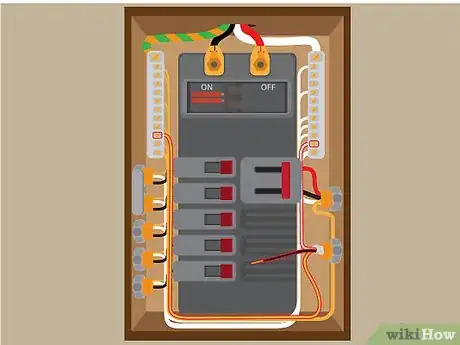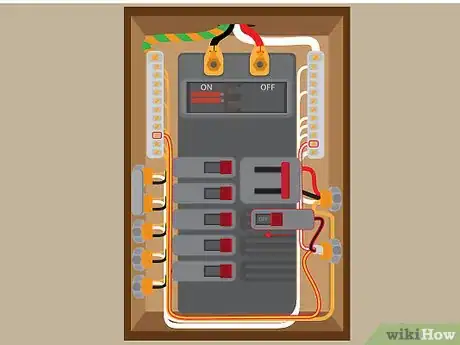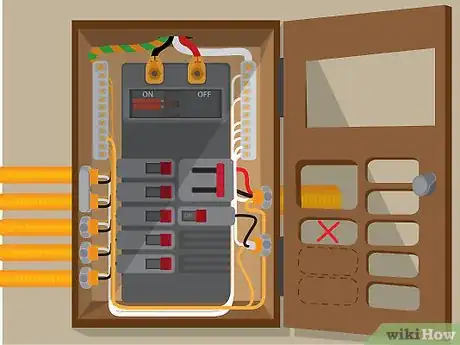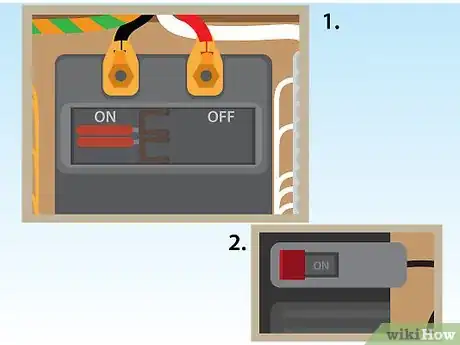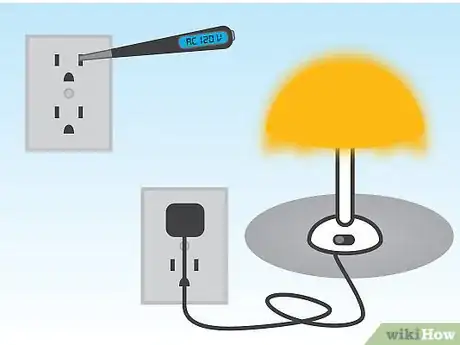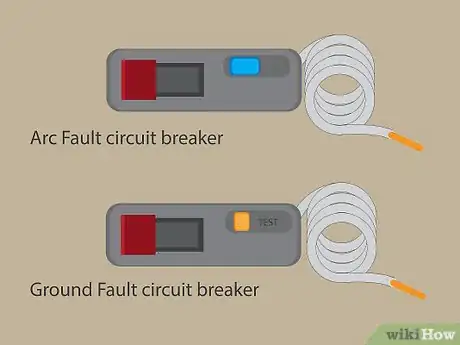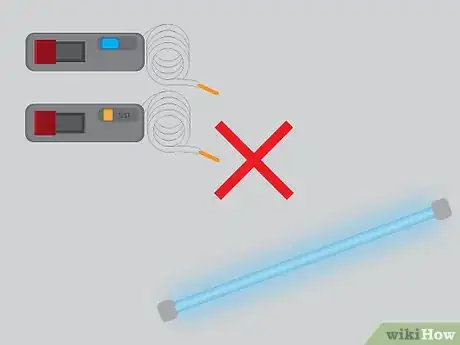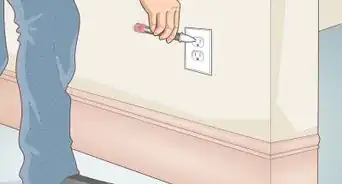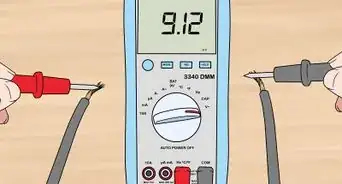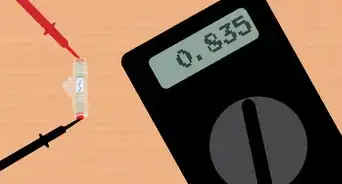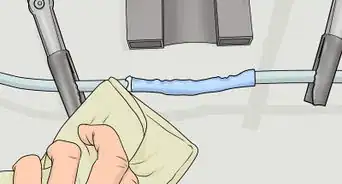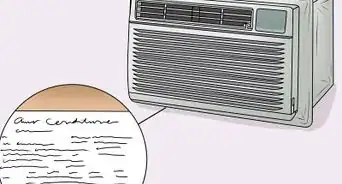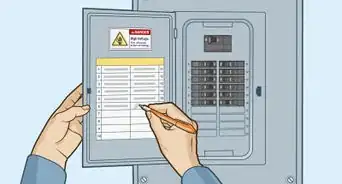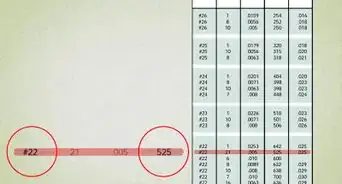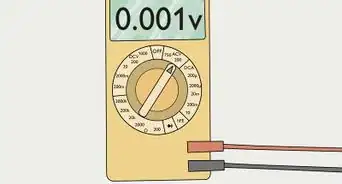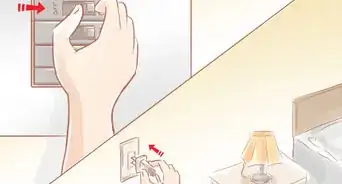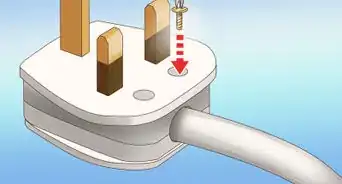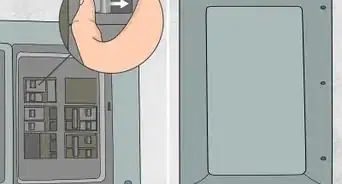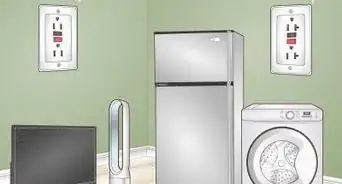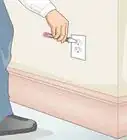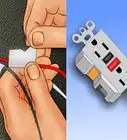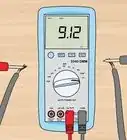This article was co-authored by Daniel Stoescu. Daniel Stoescu is a Master Electrician and the Owner and Operator of Home Tech Solutions, LLC in Hampton, Virginia. With over a decade of experience, Daniel specializes in wiring residential, commercial, and light industrial structures. The Home Tech Solutions team has over four decades of combined experience and offers comprehensive solutions for residential electrical needs.
wikiHow marks an article as reader-approved once it receives enough positive feedback. In this case, 88% of readers who voted found the article helpful, earning it our reader-approved status.
This article has been viewed 927,975 times.
In order to install an electrical outlet and circuit from scratch you need a roll of 14-2 or 12-2 Romex® cable (depending on how much load you need from the outlet) and either a new work box, or an old work box.
Steps
-
1Determine load. Based on the load you want to serve, (meaning how much current in amps will be needed from the outlets) a 14-2 Romex® cable, which is a relatively thin cable suitable for up to 15 amps (or 12 amps continuous load) could be selected. Otherwise, a 12-2 Romex® cable, which is one size larger than 14-2 Romex® cable and suitable for up to 20 amp circuits (or 16 amps continuous load) is the other size cable installed for outlets. Most home's outlets are wired with 14-2 Romex®, that supply up to 8 outlets per circuit. Oversimplified, the National Electrical Code (NEC) mandates outlets in the kitchen and dining room must be served by 20 amp circuits. A 12-2 Romex® circuit would provide for this (installing a 30 amp dryer outlet or 50 amp range / welding outlet is beyond the scope of this article, but is similar).
-
2Inspect your breaker box prior to running a new cable to make sure you have additional space for breakers. It is best to identify what type of panel you have and whether or not the breakers are available or obsolete. Part of this process involves removing the dead front assembly (the door over your breakers) and looking inside at the bussing. This can potentially be dangerous if you accidentally short out the metal plate to the bussing in the panel. Depending on the type of panel it can be relatively simple or very hazardous. Murray or Bryant type panels usually are the safest to install into. If your panel happens to be a Zinsco, Stablok or Pushmatic you can set yourself up for serious problems trying to do this yourself. For instance on Pushmatic panels the bussing is usually energized. Without the proper knowledge you could accidentally short the bussing out and cause a catastrophic failure (phase to ground or phase to phase short). The symmetrical amperage faults available are only limited by the primary fusing on the transformer and the overall design of the system. Just something to keep in mind when doing this job yourself. I would recommend disconnecting power and removing the meter and ring if possible to eliminate hazards. This too is often outside the scope of do it yourself type work.Advertisement
-
3Run a cable from the circuit breaker panel to your new outlet location. Romex® cable ("Type NM" cable) is the easiest to work and least expensive way to accomplish this, and is the wiring method used in this wiki.
-
4Size circuit breaker for wire size. If a 14-2 cable is run from the panel to the outlet, then a 15 amp circuit breaker is the largest that can be used to protect that circuit. If a 12-2 cable is run from the panel to the outlet, then a 20 amp circuit breaker is the largest that can be installed to protect the circuit.
-
5Support cable. Starting at the panel, route the Romex® to the outlet. Pull about a foot of cable beyond the outlet and the balance of the Romex® coil on the floor at the panel. Staple the Romex® (where exposed) neatly back to the panel driving insulated staples every three feet and 18 inches (45.7 cm) from every box that has cable clamps / connector or 12 inches (30.5 cm) from those without a clamp / connector.
-
6Prepare the cable for entry into the box. The end of the cable needs to be carefully stripped of the outer jacket prior to installing into the box. Strip back 8 inches (20.3 cm) of jacket.
-
7Install cable into box. Push the cable into the box opening / connector until only about an inch of jacketed cable is inside the box. The outlet location needs to have the wire installed into an old work/new work box which is either to be cut in to wallboard or nailed to the wall/stud. Use of plastic or fiber electrical boxes are quicker to work than steel boxes because they do not require additional grounding. A steel box must be grounded so that it does not require the device for it to be grounded (pigtailing the ground to the device AND the box solves this).
-
8Connect the neutral wire to the device. The white wire (neutral wire) needs to be secured under either silver screw on the side of the receptacle.[1]
-
9Connect the "hot" wire to the device. The black wire ("hot" wire) needs to be secured under either gold screw on the opposite side of the neutral wire.[2]
-
10Connect the ground wire. If a metal box, cut (2) eight inch lengths of bare copper wire, and combine them and the bare wire from the Romex® cable under a properly sized wirenut. The free end of one wire will connect to the green ground screw of the outlet, and the other free end is to be connected to the metal box with a green screw (expressly for that purpose) or other approved means (special clips, etc). If a plastic (or other non-conductive material) box is used, simply connect the bare copper wire directly under the green screw of the outlet.
- The ground wire is usually green and connects to the green terminal.[3]
-
11Gently fold the wires to the rear of the box and secure the outlet to the box and attach the wall plate.
-
12Set the Main / Service Disconnect switch to in the electrical panel to the OFF position.
-
13Remove the panel cover, and set aside. Even though you have turned off the power, there are STILL live parts in the panel, particularly the large cable that feeds the main / service disconnect switch. Exercise extreme caution working near this switch.
-
14Remove a 7/8" diameter pre-punched "knock out" from the panel. This 7/8" opening in the trade is called a "half inch k o" You need to have a 1⁄2 inch (1.3 cm) (trade size) connector to insert in the k o, to transition the cable from outside the panel to the inside. These are available in a variety of styles, and materials. The easiest to install are the low profile plastic push in type. Regardless of type, use the type that is suitable for "NM" Type (Non-Metallic) or Romex® cable and is the same size as the k o removed.
-
15Cut cable to length. Allow plenty of cable for use in making up the inside the panel by tripling the panel's longest dimension for the Romex® length inside the panel. (24" by 15" panel would need 24" x 3 = 72" or 6 feet of slack). Again, strip the entire jacket except to allow for about an inch of jacket cable inside the panel. Install the Romex® connector into the panel's 1/2" k o according to instructions. Wrap the end of the cable with a couple of turns of electrical tape. Push the cable through the connector and help pull it with your other hand once it enters the panel. This push / pull motion speeds installation and reduces risk of damaging the insulation. Once about an inch of jacketed cable is INSIDE the panel, stop advancing cable, and secure it within 18" of the panel with an insulated staple.
-
16Inspect the panel. The panel has one or more terminal bars to the left and / or right or bottom of the circuit breakers. Look carefully at the bar(s). Determine if you have: two or more bars and that the white wires are NOT mixed with bare / green wires. (this arrangement has separate neutral and ground bars); or if you have one or two bars that has both whites and bare / green wires mixed in both bars (this arrangement has combined neutral and ground bars, and more common in typical residential settings). Regardless of which type you have, you must maintain the integrity of the grounding and neutral systems by duplicating the termination scheme outlined below.
-
17Connect the neutral and ground wires. The white and ground (bare) wires are to be secured under the bar(s) in the main panel. Cut these wires to length PLUS 12 inches (30.5 cm) or so of slack. If you have the combined neutral and ground style, secure these two wires in terminals as close together as possible. Do not install BOTH wires in the same terminal! If you have separate neutral and ground bars, install the wires in the respective terminal bar.
-
18Connect to the circuit breaker. The 14-2 Romex®'s black wire is to be connected to a 15 amp breaker. If you ran 12-2 Romex®, up to a 20 amp breaker can be connected. Cut this wire so as to allow it to be connected to ANY breaker position in the panel - plus a little slack. You never know when you might have to move the circuit to a different location in the panel, having enough wire to do so will make the job much easier. Set the handle of the circuit breaker to OFF. Install the circuit breaker into the panel by first hooking or clipping to the grounded or insulated slot or rail (manufacturer dependent) on the outboard side of the insulated electrical contacts, then line up the clip or slot of the circuit breaker with the electrical contact rail or bus. Press the circuit breaker firmly into the panel. Some styles "click" into place others just "bottom out". If the new circuit breaker is "even" and aligned with adjacent circuit breakers, it is most likely properly seated.
-
19Remove circuit breaker k o from panel cover. Once complete, you will probably have to remove the appropriate rectangular metal k o for the new circuit breaker on the cover of the panel. After doing so, reinstall the cover onto the panel.
-
20Restore power to the panel. Do not stand in front of the panel, but rather to the SIDE of the panel and set the Main / Service Disconnect switch to ON. Next, move the new circuit breaker handle to ON and it will power up your electrical outlet that you have just installed.
-
21Test the work. Use a meter or plug the appliance or device into the outlet and turn it on. Verify that it is working and return to the panel. Listen for hum and or crackling. Either condition is indicative of a potential connection failure or heat build up. Label the circuit breaker.
-
22Do NOT install breakers from another manufacturer because "they fit" or even packaging states it is for use in these panels. Installing these breakers VOIDS the UL listing and can result in insurance problems if there is an electrical fire.
-
23Have you work inspected by your locality's code enforcement office.
-
24Plug circuits installed in bedrooms require use of an Arc Fault circuit breaker(s). Plugs installed in but not limited to basements, garages, outdoors, or indoors and accessible from grade, bathrooms, etc. will require a Ground Fault circuit breaker or plug, UNLESS it is dedicated to a "fixed" appliance such as a washer, refrigerator, etc.
-
25Arc Fault and Ground Fault circuits are not compatible with fluorescent light fixtures!
Community Q&A
-
QuestionHow do I know what size circuit breaker I need to install an air conditioning and heating system?
 Community AnswerThere is no way to know because every AC is different. Differences in efficiency, BTU, heat strips, single/three phase, fan speed, condensate pump, single/multi stage/inverter, etc. all contribute to different amp draw. The only thing you should trust is the specifications from the manufacturer. You can find this information on the manufacturer's website, manuals, and on the unit itself. Regardless, the maximum circuit breaker you can put in is determined by the smallest size of wiring you have in a circuit.
Community AnswerThere is no way to know because every AC is different. Differences in efficiency, BTU, heat strips, single/three phase, fan speed, condensate pump, single/multi stage/inverter, etc. all contribute to different amp draw. The only thing you should trust is the specifications from the manufacturer. You can find this information on the manufacturer's website, manuals, and on the unit itself. Regardless, the maximum circuit breaker you can put in is determined by the smallest size of wiring you have in a circuit. -
QuestionI have a 20A breaker (110V) which services one outlet (dart board game); I am thinking of splitting off of that line right before the outlet (in a junction box) to supply two 80W fluorescent fixtures. Will 14-2 Romex be OK to use?
 Community AnswerNo. 14-2 wire should be used for 15 amp circuits. Use 12ga copper wire for a 20 amp circuit.
Community AnswerNo. 14-2 wire should be used for 15 amp circuits. Use 12ga copper wire for a 20 amp circuit. -
QuestionHow do I connect a mid run outlet at the end of the run? Do I need a single pole outlet?
 Community AnswerNo, since it's a mid run outlet and not the last outlet ending the circuit, you need a triple pole outlet. That way you can run your nomex to the outlet off the one set of screws, and then feed another line off the other set of screws to continue the circuit and feed the next outlet.
Community AnswerNo, since it's a mid run outlet and not the last outlet ending the circuit, you need a triple pole outlet. That way you can run your nomex to the outlet off the one set of screws, and then feed another line off the other set of screws to continue the circuit and feed the next outlet.
Warnings
- Be sure to turn the main breaker OFF whenever working inside your electrical panel.⧼thumbs_response⧽
- Even with the main breaker turned OFF there is still power going to the main breaker unless there is an outside switch before the panel. Remove rings and other metal from your hands and wear gloves and proceed with caution.⧼thumbs_response⧽
- Check your local code for Ground Fault and Arc Fault protection requirements.⧼thumbs_response⧽
- Use ONLY breakers determined by the manufacturer for use in the panel (on the inside of the panel door there should at least be the manufacturer's name and model of the panel, and most likely, a list of all breakers approved for use).⧼thumbs_response⧽
Things You'll Need
- Electrical Box
- Wire (14/2 or 12/2)
- Electrical Outlet
- 15 or 20 Amp Circuit Breaker (if installing new circuit)
- Screwdriver
- Wire cutters
- Wire stripper
- Outlet Tester (Optional)
- Insulated staples
- Romex® connectors
- Electrical tape
- Outlet cover
References
- ↑ Daniel Stoescu. Master Electrician. Expert Interview. 16 August 2021.
- ↑ Daniel Stoescu. Master Electrician. Expert Interview. 16 August 2021.
- ↑ Daniel Stoescu. Master Electrician. Expert Interview. 16 August 2021.
- http://www.howtowireahouse.com/How_To_Wire_A_Receptacle_Outlet.html
- http://www.southwire.com/romex.htm
- /Romex® is a registered trademark of Southwire®

